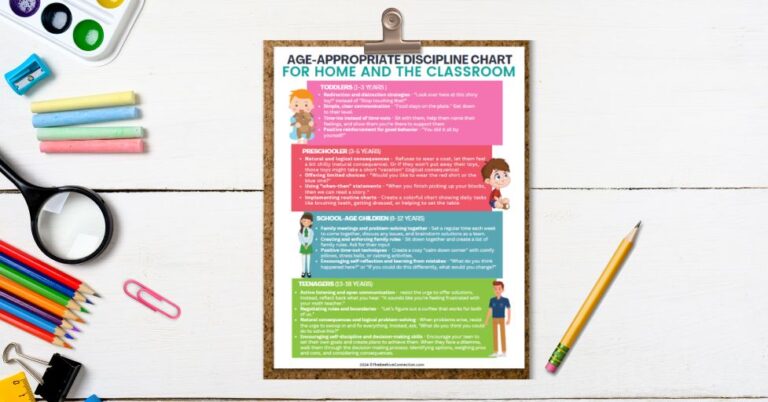15 Positive Discipline Techniques PDF For Home and the Classroom
Disclosure: This post may contain affiliate links, meaning I may get a small commission if you decide to make a purchase through my links, at no cost to you.
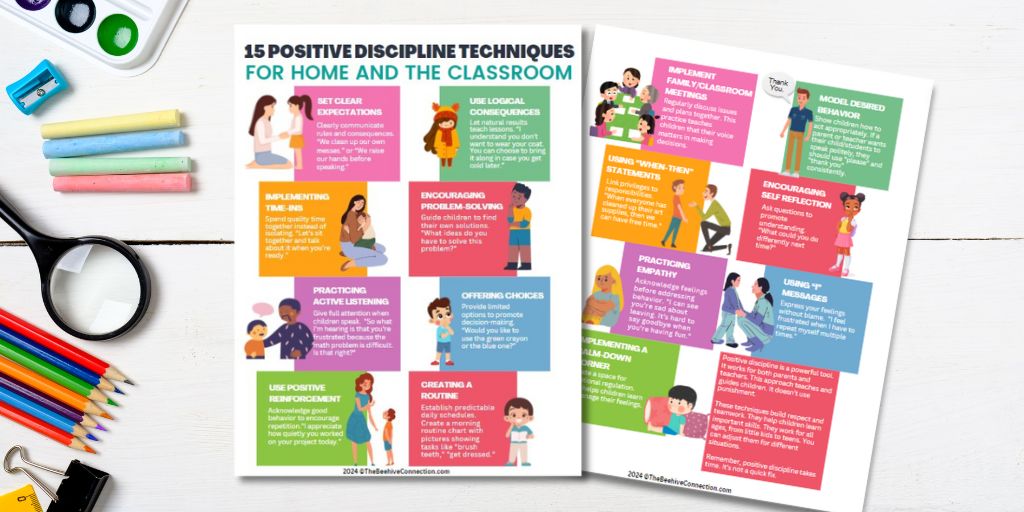
15 Positive Discipline Techniques PDF Every Parent and Teacher Should Know
Parenting and teaching can feel like walking a tightrope. One misstep, and chaos erupts. As a mom of 4 kids, preschool teacher, and educator for students with special needs, I’ve faced the struggle of keeping my cool while maintaining discipline.
You’ve tried timeouts, raised voices, and maybe even threats. But nothing seems to work consistently. Your kids still act out, and your students still disrupt class. It’s frustrating and exhausting.
What if there was a better way? A method that builds respect, fosters cooperation, and creates a positive environment at home and in the classroom?
Enter positive discipline techniques. These evidence-based strategies can transform your approach to behavior management. They work for children of all ages and abilities, from toddlers to teens.
In this parenting guide to positive discipline, I’ll share 15 powerful positive discipline techniques for both parents and teachers. You’ll discover practical tools to handle challenging behaviors without losing your temper. Plus, I’ll provide a free downloadable PDF so you can easily reference these strategies anytime.
Ready to revolutionize your discipline approach? Let’s dive in and explore these game-changing techniques together.
Get our Positive Discipline Download PDF Here:
Importance of Positive Discipline – Positive Discipline Techniques PDF
Positive discipline is a game-changer in both parenting and teaching. It’s an approach that focuses on teaching and guiding children rather than punishing them. As I’ve learned through my journey as a parent and educator, traditional disciplinary methods often fall short.
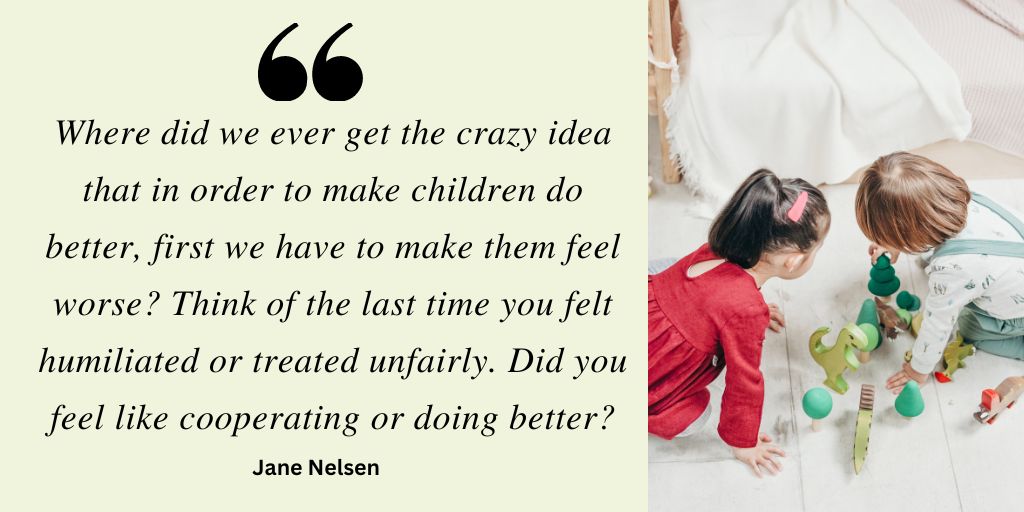
As a young mother, I relied heavily on yelling and time-outs. I thought these were effective ways to manage behavior. However, I quickly realized that while these tactics might work in the short term, they damaged my relationships with my children and failed to teach them valuable life skills.
Yelling only served to escalate situations and create fear. Time-outs, while providing a momentary break, didn’t address the root causes of behavior. Instead, they left children feeling bad about themselves, resentful, or even plotting revenge. I needed a better way – a positive discipline approach.
Positive discipline techniques in the classroom and at home offer numerous benefits. They help build strong, trusting relationships between adults and children. These methods teach kids important social and emotional skills, fostering self-discipline and responsibility.
By using positive discipline, we’re not just managing behavior; we’re shaping character and preparing children for success in life.
Implementing positive discipline isn’t always easy, but it’s worthwhile. It requires patience, consistency, and a willingness to learn alongside our children.
But the results – respectful, responsible, and resilient kids – are truly remarkable. Let’s explore some practical positive discipline parenting tools that can transform your approach to guiding children’s behavior.
Benefits of Positive Discipline Techniques for Both Parents and Teachers
Positive discipline isn’t just for home – it works wonders in classrooms too. I discovered this firsthand when my parenting journey intersected with my teaching career.

As I learned positive discipline techniques at home, I began applying them in my preschool classroom. The results were amazing.
These methods also proved invaluable in my work with special needs young adults. The principles of respect, communication, and problem-solving transcended age and ability levels.
Parents who use positive discipline often report less stress and more enjoyment in their role. They build stronger bonds with their children and feel more confident in their parenting skills.
Teachers find that positive discipline creates a calmer, more productive classroom environment. Students become more engaged and take ownership of their behavior.
Both parents and teachers benefit from improved communication with children. Kids learn to express their feelings and needs more effectively.
Positive discipline techniques in the classroom reduce power struggles and promote cooperation. This makes teaching more rewarding and less exhausting.
At home, families experience fewer conflicts and more peaceful interactions. Parents feel better equipped to handle challenging behaviors.
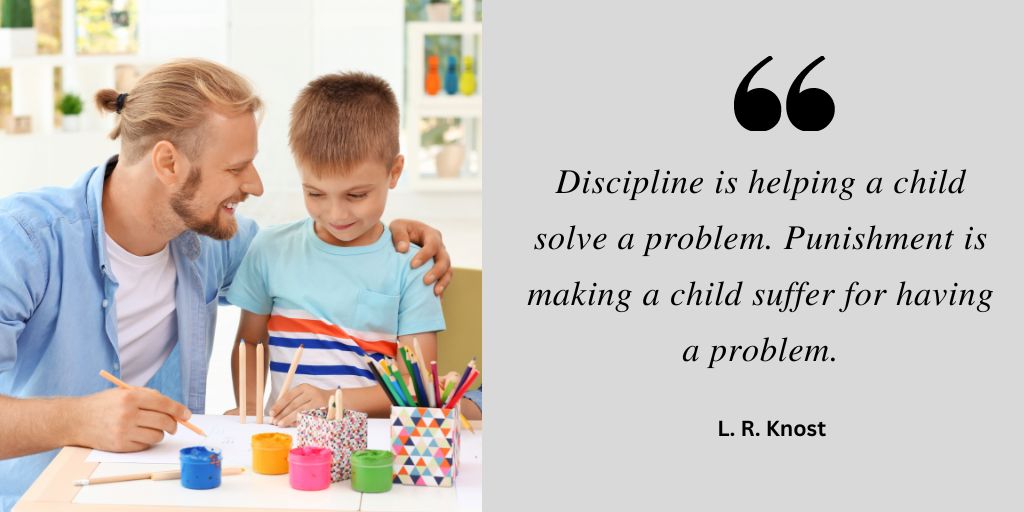
Positive discipline parenting tools PDF resources offer ongoing support for both parents and educators. These materials provide quick reference guides for various situations.
By mastering positive discipline, adults become better role models for children. They demonstrate patience, empathy, and problem-solving skills in real-time.
Ultimately, positive discipline creates a win-win situation. Adults feel more successful in their roles, while children develop crucial life skills.
15 Positive Discipline Techniques for Home and the Classroom
Positive discipline is a powerful tool. It works for both parents and teachers. This approach teaches and guides children. It doesn’t use punishment. I have found that punishment has no lasting results and can damage the child’s self-esteem.
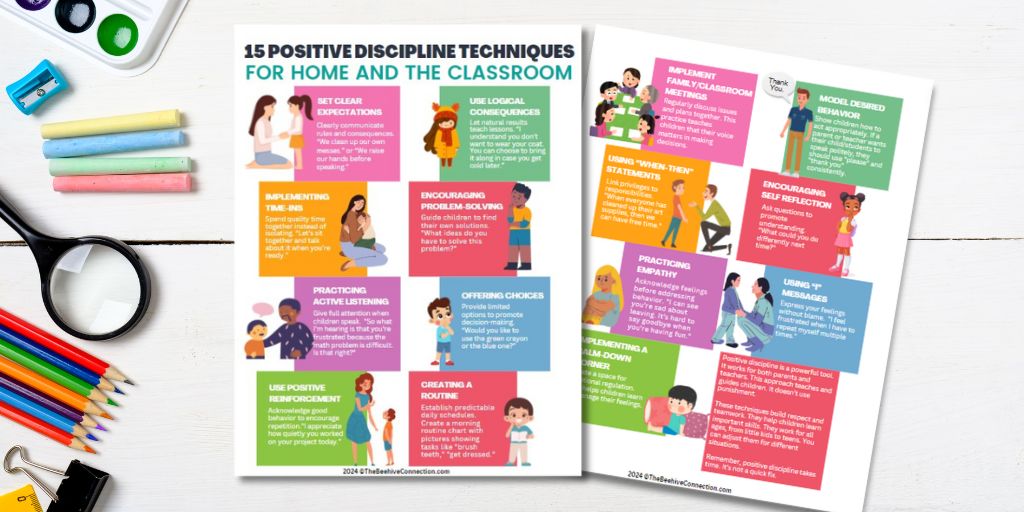
These techniques build respect and teamwork. They help children learn important skills. They work for all ages, from little kids to teens. You can adjust them for different situations.
At home, these methods reduce fights. They make families closer. In school, they create a better place to learn. Students learn to take charge of their actions.
Remember, positive discipline takes time. It’s not a quick fix. It’s about growing and learning over time. Start small. Add more techniques as you go.
Let’s explore these practical strategies. They can make a big difference at home and in class. These tools will help you guide children with care and wisdom.
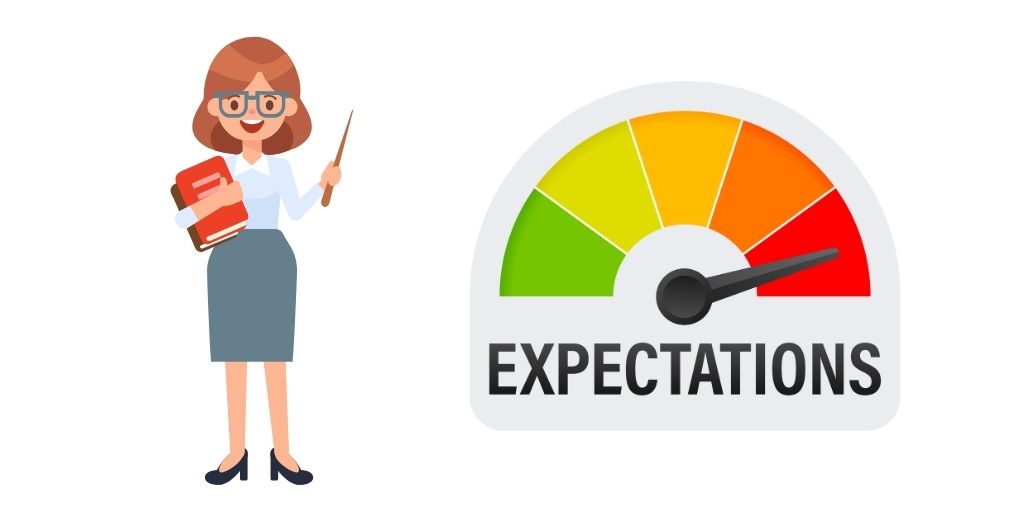
Setting clear expectations: Clear expectations are the foundation of positive discipline. In a home setting, this might look like creating a family charter together. For example, the family sits down and decides on rules like “We speak kindly to each other” or “We clean up our own messes.”
In a classroom, the teacher might lead a discussion on the first day of school to establish class norms. Students might suggest rules like “We raise our hands before speaking” or “We respect each other’s personal space.” By involving children in creating these expectations, they’re more likely to follow them.
Using logical consequences: Logical consequences teach children about the real-world results of their actions. For instance, if a child refuses to wear a coat on a cold day, the logical consequence is feeling cold.
Instead of forcing the coat, a parent might say, “I understand you don’t want to wear your coat. You can choose to bring it along in case you get cold later.” In a classroom, if a student consistently forgets their homework, a logical consequence might be staying in during recess to complete it, rather than receiving a punitive detention.
Implementing time-ins: Time-ins replace traditional time-outs with connection and guidance. At home, if a child is having a meltdown, instead of sending them to their room, a parent might say, “I can see you’re upset.
Let’s sit together on the couch and talk about it when you’re ready.” In a classroom, a teacher might have a “peace corner” where they can sit with a struggling student, offering support and helping them process their emotions.
Encouraging problem-solving: This technique empowers children to find their own solutions. For example, if siblings are arguing over a toy, instead of deciding who gets it, a parent might ask, “What ideas do you have to solve this problem?”
In a classroom, if students complain about unfair group work distribution, the teacher could guide them in a brainstorming session to create a fair work plan.
Practicing active listening: Active listening shows children their thoughts and feelings are valued. At home, this might look like a parent putting down their phone and making eye contact when their child wants to talk about their day.
In a classroom, a teacher might repeat back what a student has said to ensure understanding: “So what I’m hearing is that you’re frustrated because the math problem is difficult. Is that right?”

Offering choices: Providing limited options empowers children while maintaining boundaries. For instance, at bedtime, a parent might say, “Would you like to wear your blue pajamas or your green ones?” This gives the child a sense of control within the non-negotiable bedtime routine.
In a classroom, a teacher might offer choices for a project: “You can present your book report as a written essay, a poster, or a short video.” This allows students to play to their strengths while still meeting learning objectives.
Using positive reinforcement: Praising good behavior encourages its repetition. At home, a parent might say, “I noticed you shared your toys with your sister without being asked. That was very kind and generous of you!”
In a classroom, a teacher could say, “I appreciate how quietly everyone lined up for lunch today. You’re showing great respect for your classmates.” The key is to be specific about the behavior being praised.
Related:
The Ultimate Guide to Time-Ins Positive Discipline
Positive Reinforcement Parenting
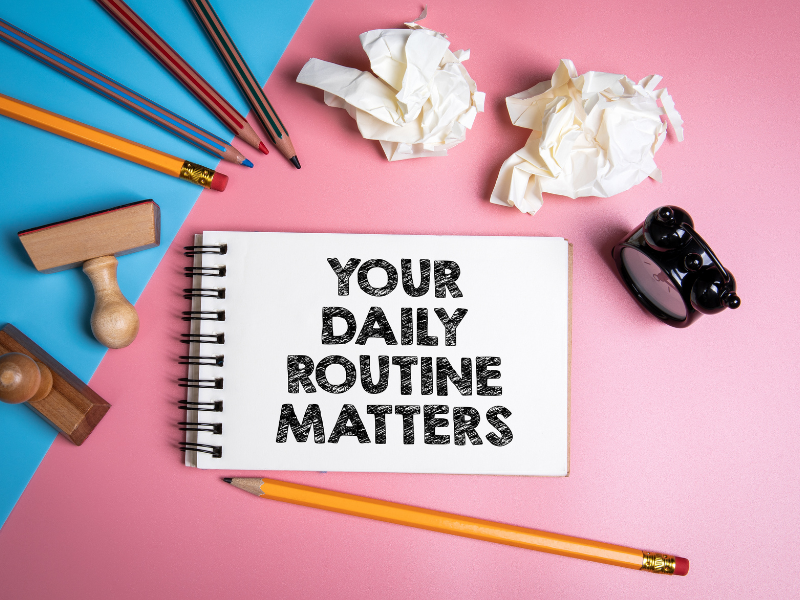
Creating a routine chart: Visual schedules help children understand expectations and develop independence. A family might create a morning routine chart with pictures showing tasks like “brush teeth,” “get dressed,” and “eat breakfast.” Children can check off each task as they complete it.
In a classroom, a teacher might display a daily schedule showing subjects and activities, updating it each morning to help students anticipate the day’s flow.
Related: Chore List for Teens
Implementing family meetings: Regular family meetings provide a forum for open communication. A family might hold weekly meetings where each member shares their “roses” (good things) and “thorns” (challenges) from the week.
They might also discuss upcoming events, address any ongoing issues, and plan fun activities together. This practice teaches children that their voice matters in family decisions.
Related:

Modeling desired behavior: Children learn by example. If a parent wants their child to speak politely, they should use “please” and “thank you” consistently, even in stressful situations.
In a classroom, if a teacher wants students to show respect during discussions, they should demonstrate active listening and respectful responses when students speak, regardless of whether they agree with the student’s point.
Using “when-then” statements: This technique links privileges to responsibilities. At home, a parent might say, “When you’ve finished your homework, then you can watch TV.”
In a classroom, a teacher could say, “When everyone has cleaned up their art supplies, then we can have free time.” This approach helps children understand that privileges come with responsibilities.
Encouraging self-reflection: Asking questions promotes understanding of one’s actions and feelings. After a conflict, a parent might ask, “What happened? How were you feeling? What could you do differently next time?”
In a classroom, a teacher might have students write in reflection journals, answering prompts like, “What was challenging about today’s lesson? What strategies helped you understand?”

Practicing empathy: Acknowledging feelings before addressing behavior helps children feel understood. If a child is upset about leaving a playdate, a parent might say, “I can see you’re sad about leaving. It’s hard to say goodbye when you’re having fun.” Then they can address the need to leave.
In a classroom, if a student is frustrated with a task, a teacher might say, “I understand this assignment feels overwhelming. Let’s break it down into smaller steps.”
Using “I” messages: Expressing feelings without blame reduces defensiveness. Instead of saying, “You never listen,” a parent might say, “I feel frustrated when I have to repeat myself multiple times.”
In a classroom, instead of saying, “You’re being disruptive,” a teacher could say, “I’m having trouble teaching when there’s talking during the lesson.”
Implementing a calm-down corner: A designated space for emotional regulation helps children learn to manage their feelings. At home, this might be a cozy corner with pillows, stress balls, and books.
In a classroom, it could be a quiet area with headphones, coloring materials, and emotion cards to help students identify and express their feelings. The key is to present this space as a positive tool, not a punishment.
Positive Discipline Techniques PDF for the Classroom
Creating a peaceful classroom environment can be challenging, but it’s possible with the right techniques. I used positive discipline to make my classroom a calmer, happier place.
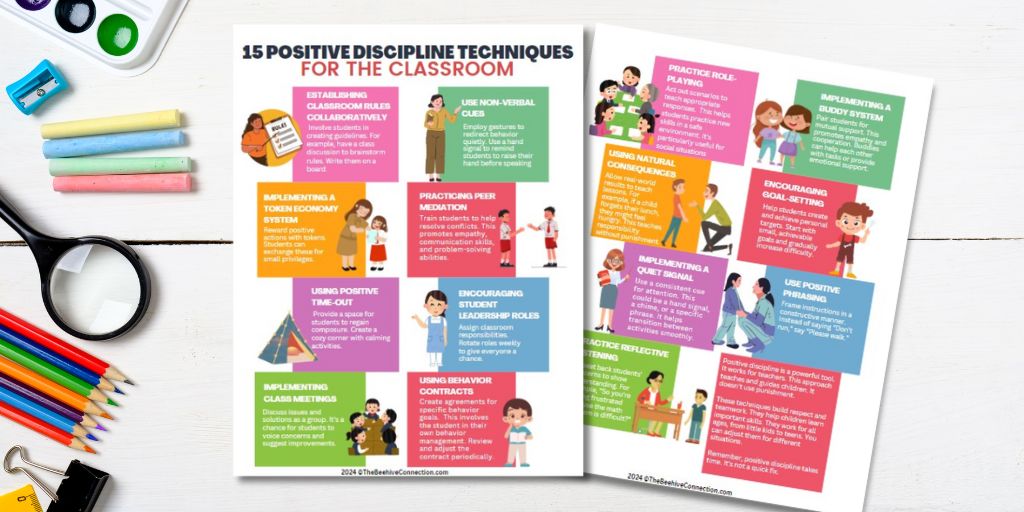
This guide will show you how I did it. You’ll learn simple, effective methods to improve behavior and build a positive atmosphere. Positive discipline helped me manage conflicts, encourage cooperation, and make learning more fun for everyone. Download the Positive Discipline Techniques PDF and see how these techniques can transform your classroom too!
Establishing classroom rules collaboratively: Involve students in creating guidelines for the classroom. This promotes ownership and understanding of expectations. For example, have a class discussion on the first day of school to brainstorm rules. Write them on a poster and have everyone sign it. This technique is a key part of positive discipline in the classroom.
Using non-verbal cues: Employ gestures to redirect behavior quietly. This minimizes disruptions and maintains a positive atmosphere. For instance, use a hand signal to remind students to raise their hand before speaking. This method is especially effective in Montessori settings, where self-discipline is emphasized.
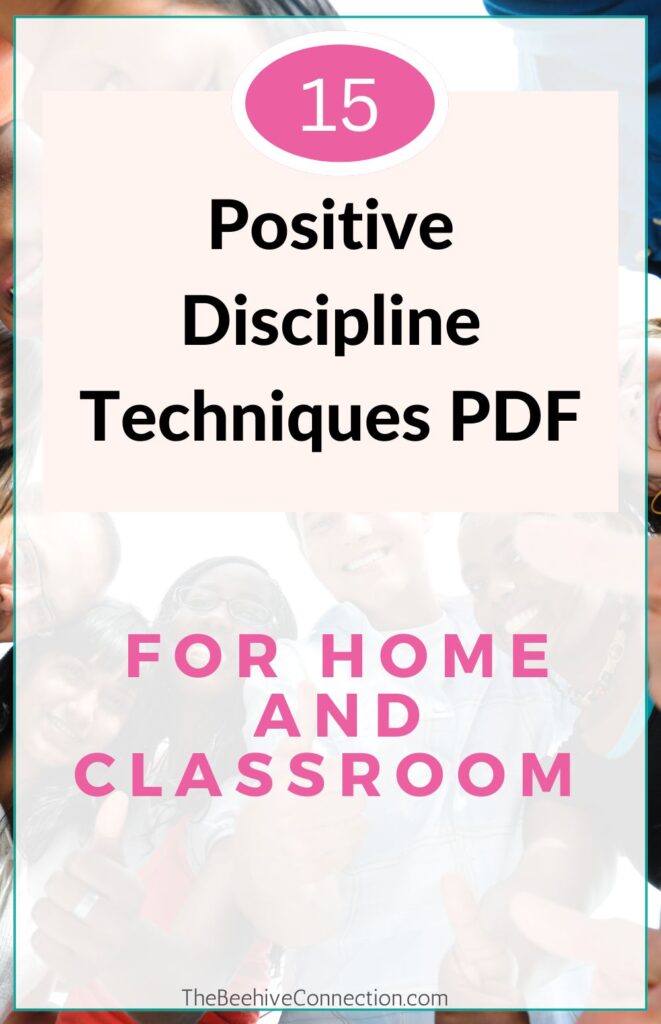
Implementing a token economy system: Reward positive actions with tokens or points. Students can exchange these for small privileges. This system encourages good behavior and helps children learn self-regulation. It’s a popular positive discipline technique in the classroom.
Practicing peer mediation: Train students to help resolve conflicts among their classmates. This promotes empathy, communication skills, and problem-solving abilities. It’s an effective way to handle disputes without adult intervention. Many positive parenting resources recommend this approach.
Using positive time-out: Provide a space for students to regain composure when overwhelmed. This isn’t a punishment, but a tool for self-regulation. Create a cozy corner with calming activities. This aligns well with Montessori at home positive discipline practices.
Encouraging student leadership roles: Assign classroom responsibilities to students. This fosters a sense of belonging and importance. Rotate roles weekly to give everyone a chance. It’s a key strategy in positive discipline parenting tools PDF guides.
Implementing class meetings: Discuss issues and solutions as a group regularly. This promotes communication and problem-solving skills. It’s a chance for students to voice concerns and suggest improvements. Many parenting class worksheets include guidance on facilitating such meetings.
Using behavior contracts: Create agreements for specific behavior goals. This involves the student in their own behavior management. Review and adjust the contract periodically. It’s a technique often covered in positive parenting skills PowerPoint presentations.
Practicing role-playing: Act out scenarios to teach appropriate responses. This helps students practice new skills in a safe environment. It’s particularly useful for social situations. Many positive parenting techniques PDF resources recommend this approach.
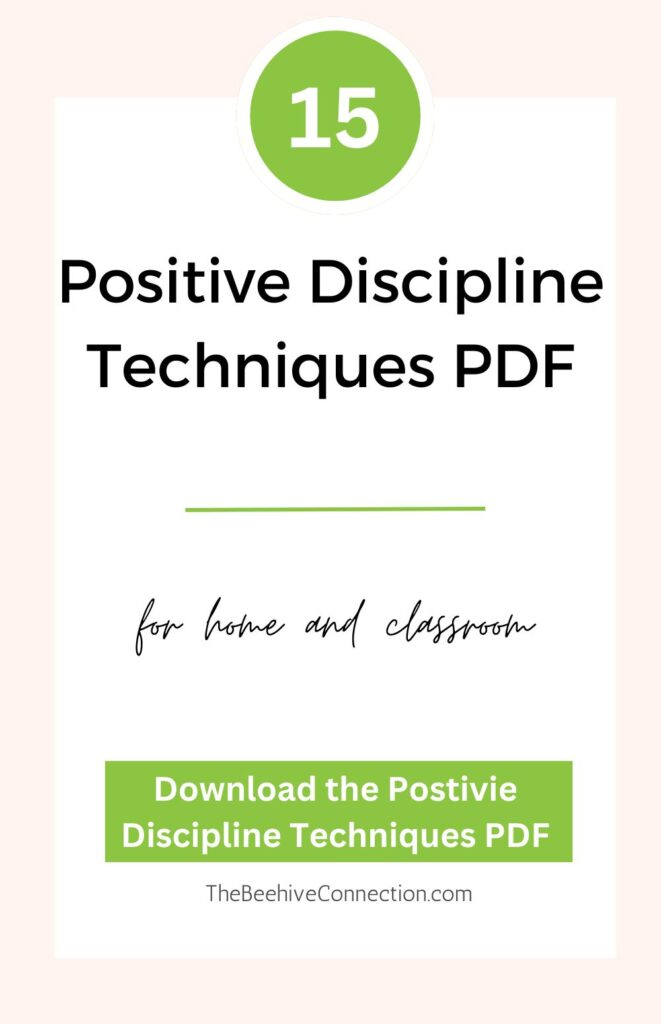
Implementing a buddy system: Pair students for mutual support. This promotes empathy and cooperation. Buddies can help each other with tasks or provide emotional support. It’s a strategy often included in parenting lesson plans.
Using natural consequences: Let real-world results teach lessons. For example, if a child forgets their lunch, they might feel hungry. This teaches responsibility without punishment. It’s more effective than imposed consequences. Natural consequences are a key part of positive discipline parenting tools.
Encouraging goal-setting: Help students create and achieve personal targets. This builds motivation and self-confidence. Start with small, achievable goals and gradually increase difficulty. Celebrate progress along the way. Many parenting guides to positive discipline emphasize this technique.
Implementing a quiet signal: Use a consistent cue for attention. This could be a hand signal, a chime, or a specific phrase. It helps transition between activities smoothly. Practice the signal regularly so it becomes automatic. This method is often featured in positive discipline PPT presentations.
Using positive phrasing: Frame instructions in a constructive manner. Instead of saying “Don’t run,” say “Please walk.” This focuses on desired behavior rather than prohibited actions. It creates a more positive atmosphere. Positive phrasing is a core concept in positive parenting solutions PDF resources.
Practicing reflective listening: Repeat back students’ concerns to show understanding. This validates their feelings and ensures clear communication. It helps students feel heard and respected. For example, “So you’re feeling frustrated because the math problem is difficult?” This technique is often included in free discipline videos and resources.
Positive Discipline Techniques PDF Conclusion
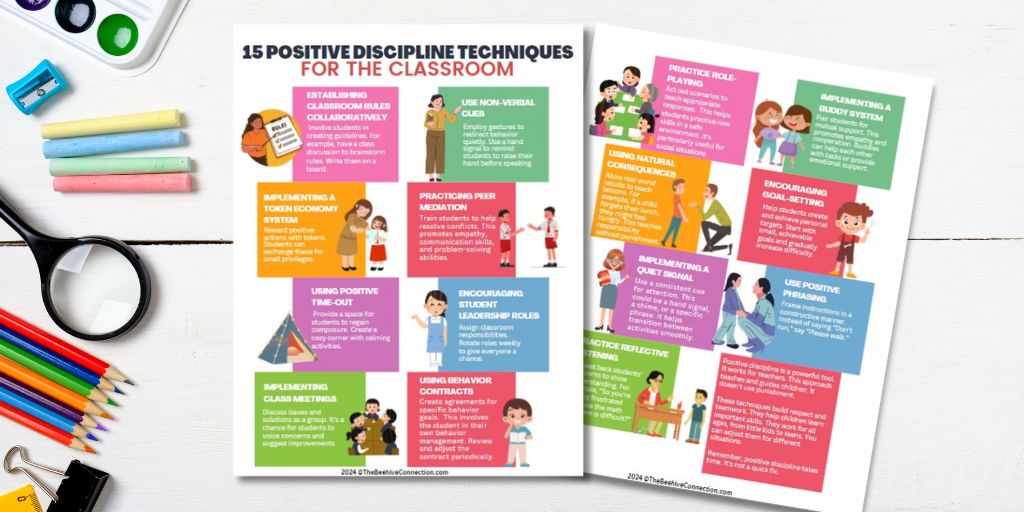
Recap of the importance of positive discipline: Positive discipline is a transformative approach that fosters respect, cooperation, and self-discipline in children. It moves away from punitive methods and focuses on teaching valuable life skills.
By implementing these techniques, parents and teachers create environments where children feel valued, understood, and capable. Positive discipline strengthens relationships, reduces conflicts, and helps children develop emotional intelligence and problem-solving skills.
Encouragement for parents and teachers to implement these techniques: Embracing positive discipline may feel challenging at first, but the long-term benefits are immeasurable. Start by implementing one or two techniques and gradually incorporate more.
Remember, consistency is key. Be patient with yourself and the children as you all learn and grow together. The positive changes in behavior, communication, and overall atmosphere will reinforce your efforts. By using positive discipline, you’re not just managing behavior; you’re shaping future generations of confident, responsible, and empathetic individuals.
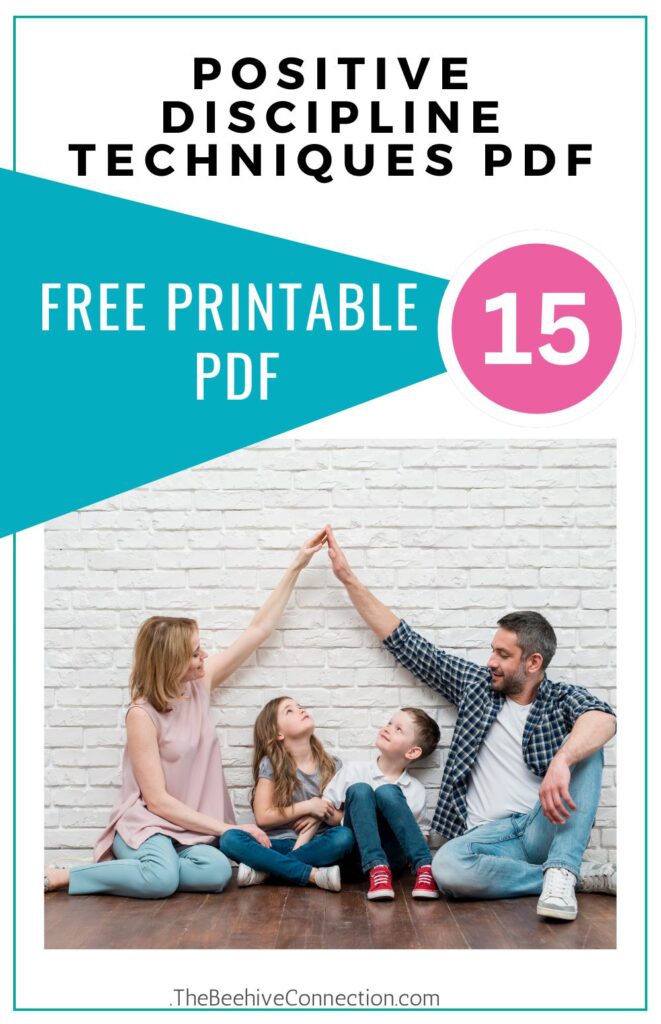
Postive Discipline Techniques Additional Resources
Parenting books on positive discipline:
- “Positive Discipline” by Jane Nelsen
- “How to Talk So Kids Will Listen & Listen So Kids Will Talk” by Adele Faber and Elaine Mazlish
- “The Whole-Brain Child” by Daniel J. Siegel and Tina Payne Bryson
- Emotion identification charts
- Problem-solving worksheets
- Family meeting agenda templates
- Goal-setting worksheets for kids
- Positive behavior reward charts
Positive parenting skills powerpoint presentations:
- “Introduction to Positive Discipline Techniques”
- “Effective Communication with Children”
- “Managing Challenging Behaviors Positively”
- “Building Emotional Intelligence in Children”
- “Creating a Positive Home/Classroom Environment”
Montessori at home positive discipline resources:
- Natural consequences in Montessori philosophy
- Positive Discipline Montessori approach to conflict resolution
Additional Positive Discipline Techniques PDF and Other Resources
- Positive discipline parenting tools PDF
- Best positive parenting resources
- Discipline worksheets
- Free discipline videos
- Parenting class worksheets
- Parenting lesson plans
- Positive discipline techniques in the classroom
Remember, many of these resources are available as free downloads or through your local library. Implementing positive discipline is an ongoing journey, and these tools can provide valuable support along the way.

FAQ on Positive Discipline Techniques:
- Q: How do I start using positive discipline at home? A: Start small! Pick one positive discipline technique, like offering choices, and practice it daily. For example, ask “Would you like to brush teeth or put on pajamas first?” Be consistent and patient. As you get comfortable, add more techniques gradually.
- Q: What’s the difference between positive discipline vs punishment? A: Punishment focuses on making kids feel bad for misbehavior. Effective discipline: Positive discipline teaches skills and solves problems together. Instead of timeouts, try “time-ins” where you connect and talk about feelings. It builds respect and cooperation.
- Q: How can I use positive discipline in a classroom? A: In classroom management and positive discipline in school, it is essential to involve students in creating class rules. Use non-verbal cues like a quiet signal. Implement class meetings to discuss issues. Encourage peer mediation for conflicts. These techniques create a positive learning environment and teach important life skills.
- Q: What if positive discipline doesn’t seem to work right away? A: Be patient! Change takes time. Everyone has discipline challenges and parenting struggles. Stay consistent and keep practicing. Remember, you’re teaching new skills, not just stopping bad behavior. If one technique isn’t working, try another. It’s okay to adjust your approach as you learn what works for your child.
- Q: Are there any resources to help me learn more about positive discipline? A: Yes! Check out our positive parenting resources. Look for free parenting books PDF downloads, positive discipline worksheets, and free discipline videos online. Many libraries offer parenting classes too. Start with the resources mentioned in our blog post and explore from there.
GET FREE ACCESS TO OUR LIBRARY OF FREE PRINTABLES AND RESOURCES!
Enter Your Name and Email for FREE Access to our Library of FREE Home and Family Printables Series!



